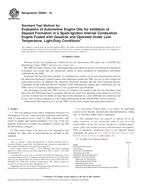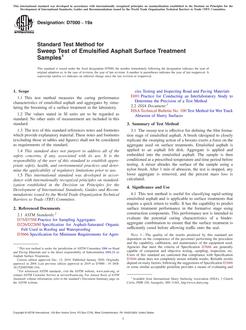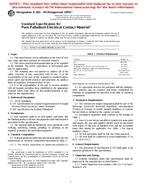1.1 This practice covers a procedure for determining the electrical conductivity of nonmagnetic metals using the electromagnetic (eddy-current) method. The procedure has been written primarily for use with commercially available direct reading electrical conductivity instruments. General purpose eddy-current instruments may also be used for electrical conductivity measurements but will not be addressed in this practice.
1.2 This practice is applicable to metals that have either a flat or slightly curved surface and includes metals with or without a thin nonconductive coating.
1.3 Eddy-current determinations of electrical conductivity may be used in the sorting of metals with respect to variables such as type of alloy, aging, cold deformation, heat treatment, effects associated with non-uniform heating or overheating, and effects of corrosion. The usefulness of the examinations of these properties is dependent on the amount of electrical conductivity change caused by a change in the specific variable.
1.4 Electrical conductivity, when evaluated with eddy-current instruments, is usually expressed as a percentage of the conductivity of the International Annealed Copper Standard (IACS). The conductivity of the Annealed Copper Standard is defined to be 0.58108 S/m (100 % IACS) at 20°C.
1.5 The values stated in SI units are regarded as standard.
1.6 This standard does not purport to address all of the safety concerns, if any, associated with its use. It is the responsibility of the user of this standard to establish appropriate safety and health practices and determine the applicability of regulatory limitations prior to use.
Product Details
- Published:
- 07/10/2002
- Number of Pages:
- 4
- File Size:
- 1 file , 46 KB
- Redline File Size:
- 2 files , 76 KB


